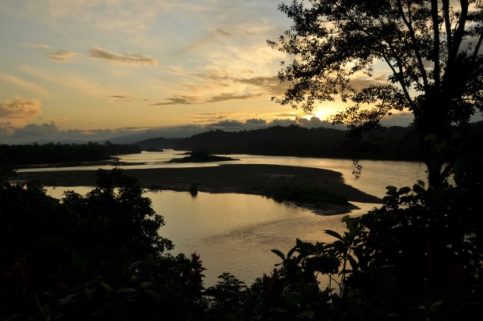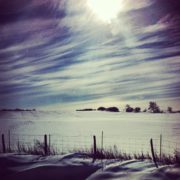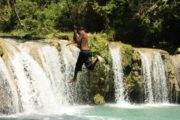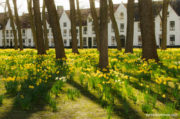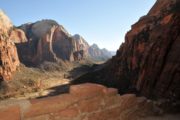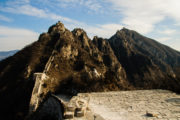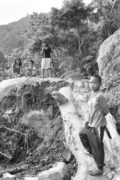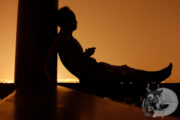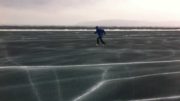Ecuador’s Amazon: life in the world’s lungs
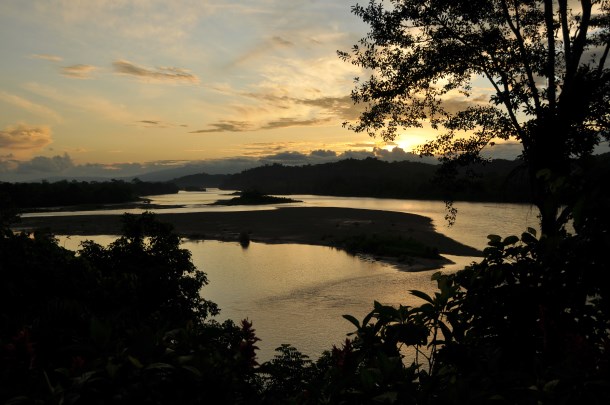
Sunset over Rio Napo – Napo Province, Ecuador
There’s no TV, cellphones, or internet in the Amazon; only satellite phones (if you’re near a lodge). Stores here are usually in the form of markets or a small room in a local persons house where you can get a few essentials. Life is different in the jungle, slower, and for those who live here the Amazon presents it’s own challenges.
From all my travel experiences the Amazon is the noisiest place on earth! At night and through the early morning hours you hear a thousand and one animals and insects communicating at the same time. And the humidity, oh the humidity! In the Amazon it feels like you are never dry, between light or heavy rainfall, the heat, and the dense humid atmosphere the Amazon is a forest like none I’ve ever experienced.
It’s alive and when you kill part of it, it comes back with a vengeance and speed that is incomprehensible. Primary forest (original Amazon forest hundreds of years old) is so dense that it’s hard to imagine anyone navigating their way through it, secondary forest (abandoned farms or cut down areas that have started to grow back within the last 1oo years), and tertiary forest (where cacao and other plants are farmed and harvested in pockets within the jungle) make up the region of the Amazon where I was visiting.
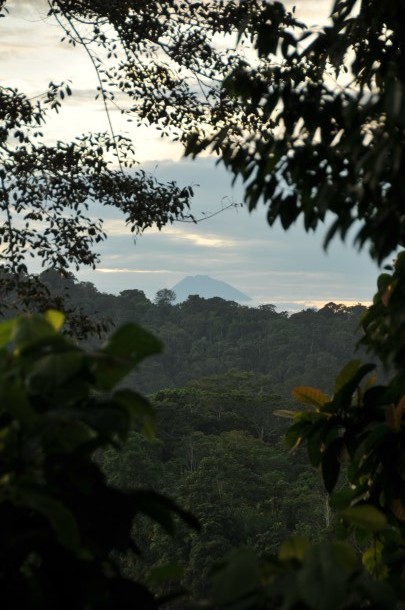
Sumaco volcano Amazon Rainforest Napo Province, Ecuador
Napo province is a few hours south east of the Ecuador’s capital, Quito. Tena, the region’s largest city of 30 000, is about three hours away from where I was visiting with an all-boys school from Los Angeles, California. To get to the lodge and community we were staying with you had to take a 20 minute boat ride down the Rio Napo.
The Rio Napo is special because it never looks the same twice no matter where you are. Day by day it rises and falls from the highland rainfall as if breathing. Some days you’ll see an island in the middle of the river and the next it’s gone.
Along the river banks of the Amazon you’d never be able to find peoples communities, farms, or markets unless you lived along places like the Rio Napo. Walls of jungle line the riverbank as exotic colourful birds flutter from tree to tree while the turgid muddy waters of the Rio Napo flow towards the ocean fiercely, a speed that would scare even the most experienced swimmer.
Our time in this region of the Amazon was spent on the boarder of the Amazon Rainforest just past the Andes. My job during our visit was to lead a service learning trip in a community known as Mondana where the organization Free the Children was helping develop an alternative income project for the community.
Between days of building a Chosa (traditional palm leaf roof building) and exploring the region we had opportunities to see how local agriculture worked in the Amazon as well as explore some of the jungle.
Farming in the Amazon is not easy. Before you can even start planting you need to find a plot of land near a clean spring water source (for drinking) and clear the jungle as thick as butter. Once that’s done you have to fight back the jungle that is constantly trying to take back your land and watch that crops like corn don’t rot in the high humidity.
For many who farm in the Amazon, subsistence farming with small crops that are sold at local markets provides families with what they need to survive. It’s not an easy life and the work that goes into farming organically without modern technology (because petrol is expensive and not easily accessible and the high humidity destroys pretty much all metals) is hard work.
Some of what locals grow includes corn, cacao, citrus fruits, palm hearts, grubs (an Amazonian delicacy). Most communities in the region of the Amazon I was working in speak an indigenous language called Kichwa. They also speak Spanish which they learn in school.
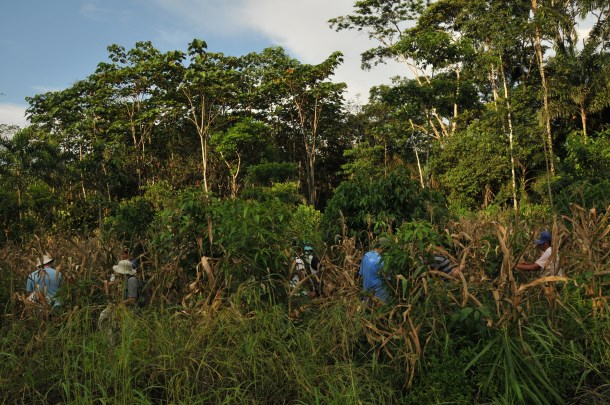
Picking corn in the Amazon Rainforest Napo, Ecuador
Most people in Ecuador are Roman Catholic a result of the extensive evangelization by the Franciscans during the Spanish colonization of the country. Arriving on Easter weekend our group (coming from a Jesuit high school) were invited to spend the Easter Sunday mass with the community of Mondana.
During the celebration a few things stood out to me. First was the congregation, which was composed primarily of women and children from Mondana (since the men were off working far from their families). The second was that during communion (when the congregation goes up to receive the “body of Christ”) no one from the local community went up.
Later I discovered that the priest services up to 60 communities in the region and hadn’t been to Mondana in more than 3 months. This meant that parishioners could not go to confession and as a result weren’t able to receive communion as that would be a sin.
As the mass was going on I couldn’t help but attempt to put my feet in the shoes of the indigenous people who probably stood listening to the foreign sounds, and looking at deities they didn’t recognize, hundreds of years before me.
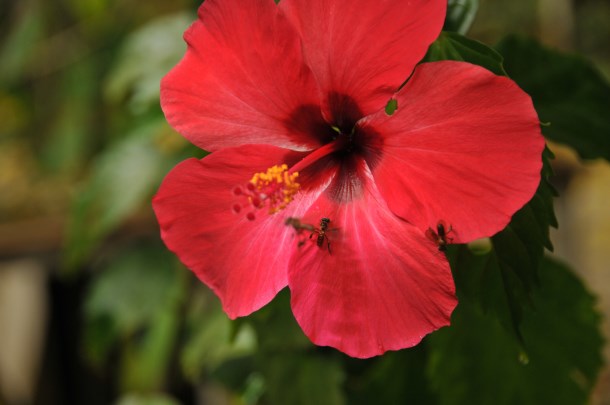
Insects on a flower Amazon Rainforest Napo Province, Ecuador
Life in the Amazon is slower; probably because it’s too hot to move fast. Yet there’s a rhythm to it, a pace that the people, plants and animals move to. For those who live in the Amazon they can tell the time by the sounds that the insects and animals make, they can find insects and plants that seem camouflaged to the naked eye, and they know how to use the jungle for everything from health to hunger.
Though my time in the Amazon was short there’s no doubt in my mind that I will one day return to explore it more deeply. To be honest, there’s probably no end to the things you can learn in the Amazon and each day brings new insights and experiences.
A friend once told me that if you look at a spot in the Amazon once you’ll see something new, look twice and you’ll see something you didn’t see the first time, look three times and you’ll find something you missed, look four times and you realize there’s no end to what you’ll see. This lesson, like the Amazon itself, will say with me forever.
Happy Travels,
Yak

